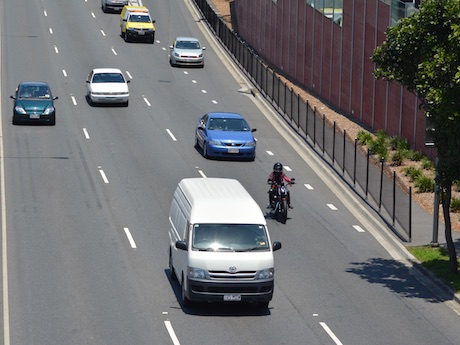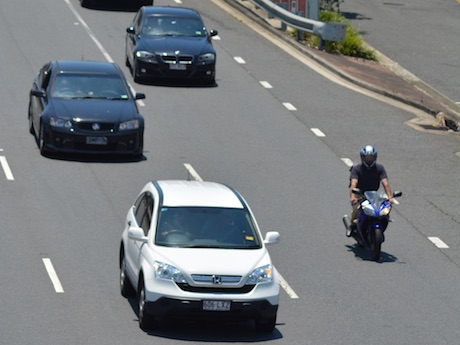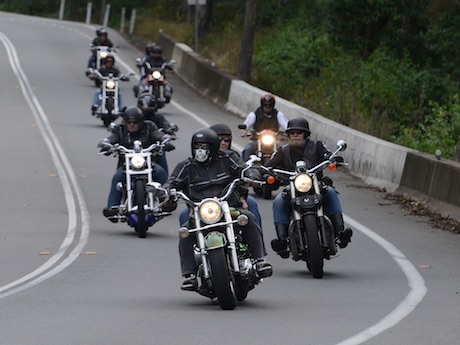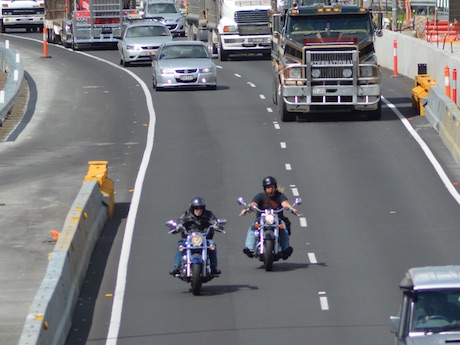The answer to what is the best lane position for motorcycle riders is not simple.
Most instructors tell novice motorcyclists to ride in the driver’s side wheel track so they can be seen and where the tyres clean the road of oil, gravel and rainwater.
That’s the simple answer and one that most people use to great advantage.
However, lane position also depends on a lot of other variables such as traffic, location and road conditions.
In heavy traffic, you should frequently switch between left and right wheel tracks to attract the attention of car drivers.

If you sit in the one wheel track, you may become a blind spot, even if you are still visible in one or more mirrors. If you are frequently changing position, you will attract drivers’ attention.
In multi-lane traffic, it can also be advantageous to sit in the passenger wheel track when alongside another vehicle as it provides a bit more of a buffer zone in case they suddenly merge into your lane.
As you approach an intersection where there is a vehicle on a side road waiting to turn into your street, swapping wheel tracks may attract their attention. I usually move to the wheel track furthest away to provide a bigger buffer zone.
Being seen by traffic going the opposite direction is also important if you are out on a country road, following behind other vehicles.
If you sit in the passenger wheel track, vehicles coming the other direction won’t see you and may start overtaking as soon as they’ve passed the vehicle in front of you.

Sitting in the driver’s wheel track will make opposing traffic aware of your presence.
However, if you are in a bend, it may actually be better to sit in the passenger wheel track for visibility. If you can see approaching traffic, then they should be able to see you.
When riding down a lonely country road, the driver’s wheel track is usually less bumpy and has less stray gravel.
However, as you pass a vehicle going the opposite direction or you crest a hill, it’s a good idea to move to the outer wheel track, just in case the opposing vehicle suddenly weaves across the centre line. This could happen if they are changing a CD, sending a text or falling sleep!
Staying out of the middle of the lane is usually a good idea, because you are only visible in the driver’s centre mirror which is not often checked.
If you ride in the middle of the lane you will cop bumps and sewer covers which are positioned there so most vehicles straddle them.
The centre of the lane also has the least traction as it’s where vehicles drop oil or diesel, and it’s where the road is often painted with turn signals.

If you are in a group and riding in staggered formation, the lead rider should be in the driver’s wheel track.
If you have the choice, so should you.


